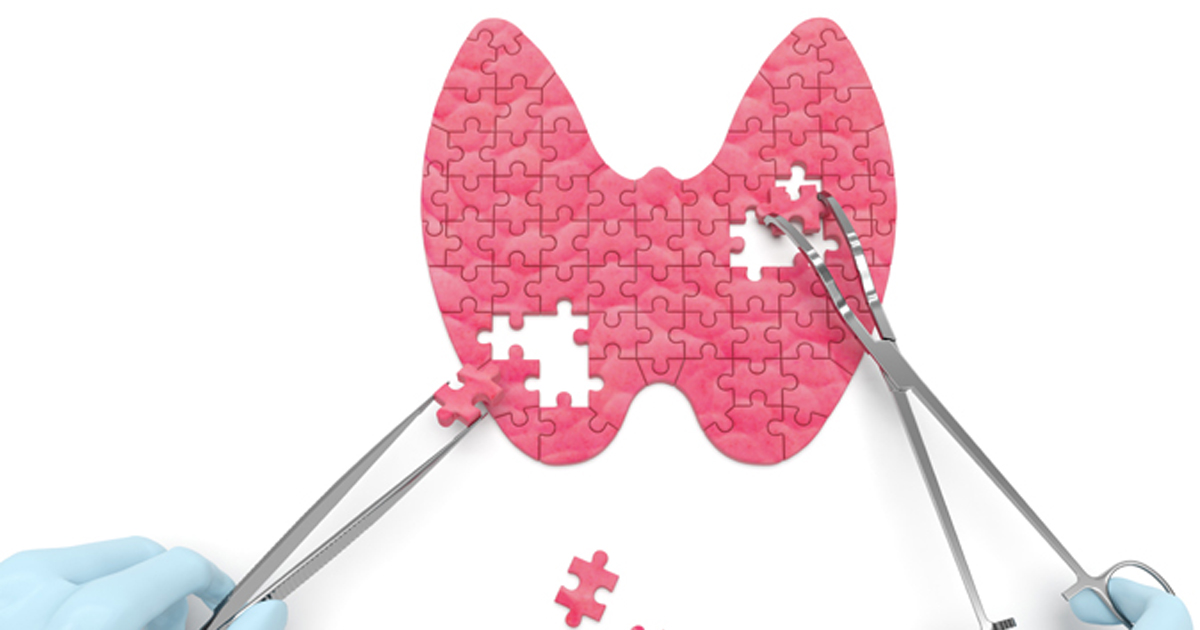Most detected thyroid microcarcinomas do not lead to surgery, suggesting overdiagnosis
Thyroid microcarcinomas are more likely than larger cancers to be discovered by ultrasound and less likely to be associated with surgery scheduled for known thyroid cancer, according to findings from a large, population-based study that included patient-reported data.

“Our findings emphasize the need to curb unnecessary diagnosis and treatment of thyroid microcarcinomas,” Megan R. Haymart, MD, associate professor of medicine, metabolism, endocrinology and diabetes at the University of Michigan, told Endocrine Today. “To prevent overdiagnosis, neck or thyroid ultrasound should not be ordered in patients unless they have symptoms or signs of thyroid enlargement. The evaluation of nodules smaller than 1 cm should be according to clinical guideline recommendations, and furthermore, fine-needle aspiration biopsy of these small nodules should be avoided. Finally, if cancer is less than 1 cm and there are no worrisome lymph nodes or high risk features, active surveillance should be considered.”
Haymart and colleagues used the Georgia and Los Angeles County Surveillance, Epidemiology and End Results (SEER) registries between 2014 and 2015 to identify 4,185 adults with newly diagnosed differentiated thyroid cancer, and mailed them surveys between February 2017 and October 2018 asking about circumstances of their thyroid nodule discovery, whether they underwent fine-needle aspiration [FNA] biopsy and reasons for thyroid surgery (response rate, 63%).
“Specifically, respondents were asked about the discovery of their thyroid nodule with the following options: didn’t know about nodule, felt it myself, doctor felt it, had a thyroid ultrasound, [and] found on imaging test other than thyroid ultrasound, such as CT scan,” the researchers wrote. “They were also asked about history of FNA biopsy of their nodule prior to thyroid surgery with yes or no answer options.”

Researchers linked survey data with SEER data on tumor and treatment characteristics, and used logistic regression analysis to determine factors associated with detection of thyroid cancers 1 cm or smaller vs. larger than 1 cm and characteristics associated with nodule discovery via thyroid ultrasound. In addition, they used multivariable logistic regression analysis to determine correlates of the indication for surgery for a nodule suspicious or consistent with cancer. Main outcomes were method of thyroid nodule discovery and reason for thyroid surgery.
Among patients who underwent surgery, 975 (38.2%) had cancers at least 1 cm in size, and 1588 (61.8%) had cancers greater than 1 cm.
Researchers found that the reported method of nodule discovery differed among patients by cancer size. Diagnosis of cancer at least 1 cm in size was associated with thyroid nodule discovery via thyroid ultrasound (vs. other imaging methods, OR = 1.59; 95% CI, 1.21-2.1), older age (OR = 1.45; 95% CI, 1.16-1.82) and female sex (OR = 1.51; 95% CI, 1.22-1.87). Hispanic and Asian race were associated with lower likelihood of diagnosis of cancers at least 1 cm in size, with ORs of 0.71 (95% CI, 0.57-0.89) and 0.67 (95% CI, 0.49-0.92), respectively.
Cancers 1 cm or smaller were associated with lower likelihood of surgery being scheduled for a nodule suspicious or consistent with cancer (OR = 0.48; 95% CI, 0.4-0.57).
“Our findings emphasize the need to curb unnecessary diagnosis and treatment of thyroid microcarcinomas,” the researchers wrote. “Recently, there has been a campaign to avoid unnecessary treatment in patients with small thyroid cancer and to establish programs for active surveillance. Although not all have been supportive of active surveillance in the management of thyroid cancer, there is a need for practice change in the
management of thyroid nodules in the United States. Neck or thyroid ultrasound should not be ordered in patients without symptoms or signs from thyroid enlargement.”
The researchers noted that the evaluation of small thyroid nodules should be conducted according to 2015 American Thyroid Association guidelines, and FNA biopsy of small thyroid nodules should be avoided.
“Until change in nodule detection and management is implemented, decreasing small thyroid cancer incidence will be challenging, and female patients will remain uniquely susceptible to overdiagnosis and potential overtreatment,” the researchers wrote. – by Regina Schaffer
For more information:
Megan R. Haymart, MD, can be reached at the University of Michigan Health System, North Campus Research Complex, 2800 Plymouth Road, Building 16, Room 408E, Ann Arbor, MI 48109; email: meganhay@med.umich.edu.
Disclosures: The authors report no relevant financial disclosures.
